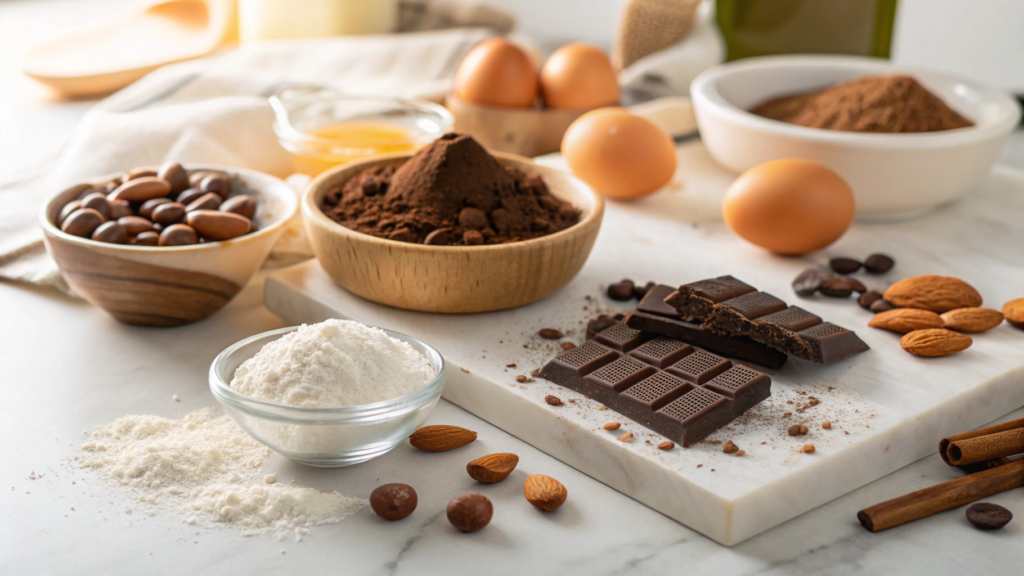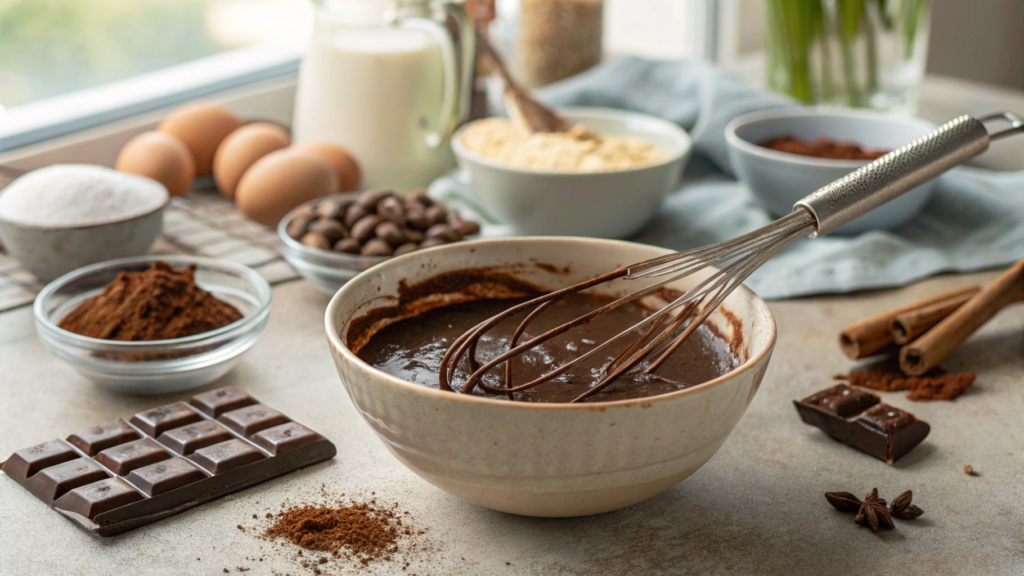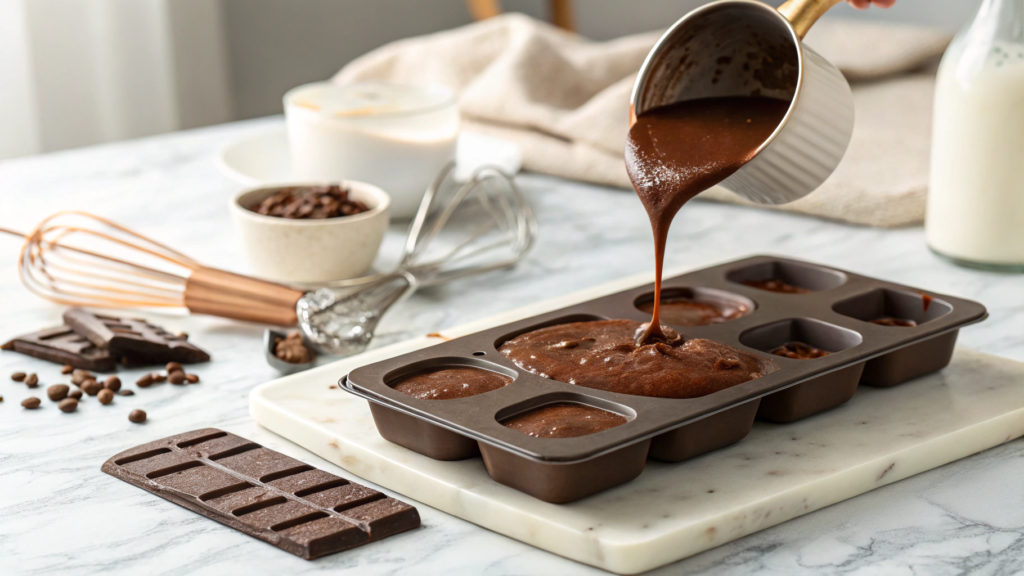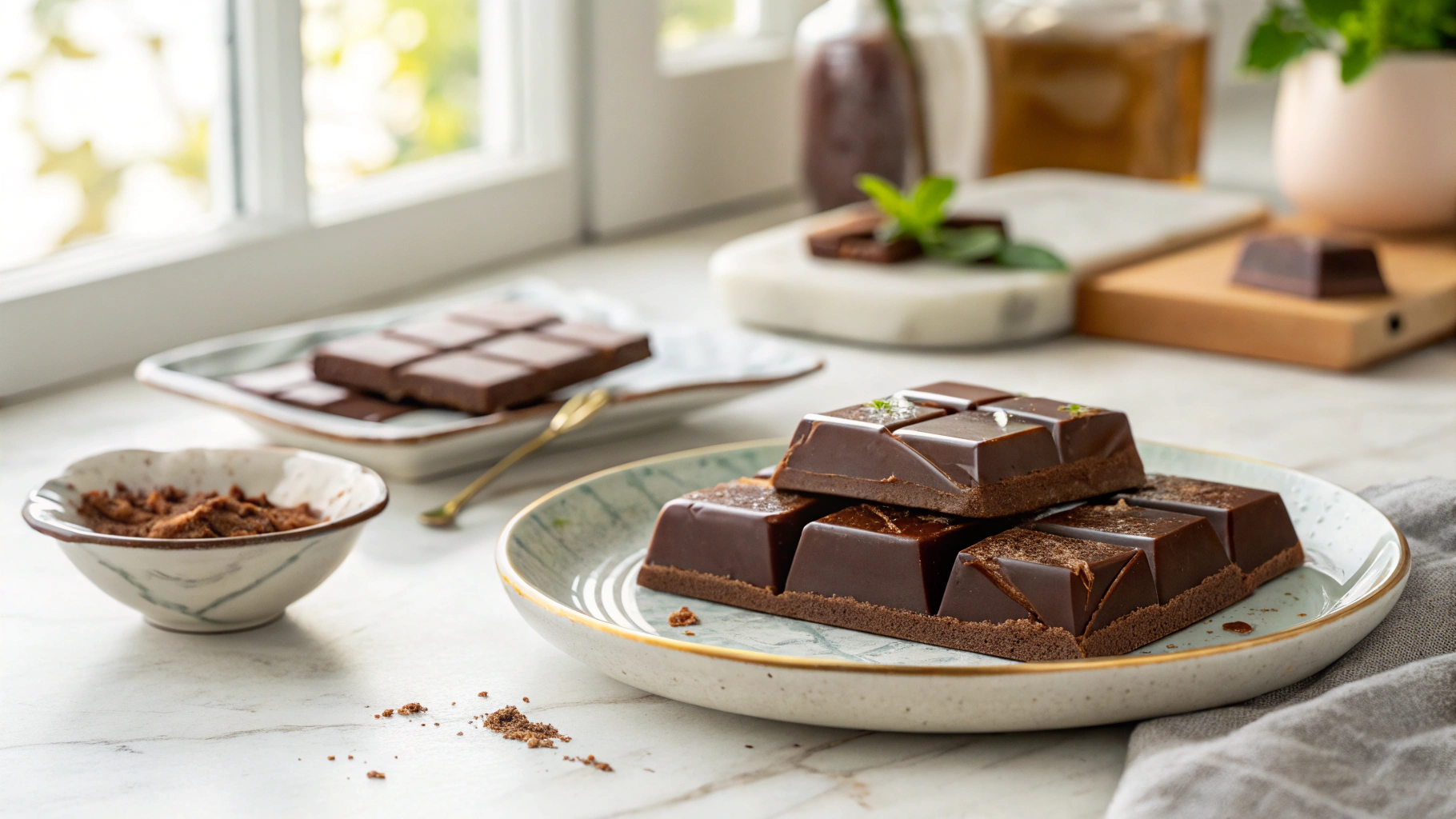If you’ve ever craved chocolate but wanted to avoid the sugar rush, you might want to consider sugar-free chocolate. With growing health concerns and diet preferences, sugar-free chocolate has become a popular alternative to traditional sweets. It offers the same indulgence but without the negative effects of sugar, making it a great choice for those managing their weight, blood sugar levels, or simply looking to cut back on sugar intake.
In this guide, we’ll explore everything you need to know about sugar-free chocolate: from what it is, its benefits, and the types available, to how to make it at home and how it fits into your diet. We’ll even dive into some common questions people have, like whether it’s truly healthy or if it can cause digestive issues. Let’s dig in!
What Is Sugar-Free Chocolate?
Defining Sugar-Free Chocolate
Sugar-free chocolate is exactly what it sounds like: chocolate made without the usual sweeteners like sugar. Instead, it’s sweetened with alternatives such as stevia, erythritol, or monk fruit. These ingredients provide the sweetness we crave but without the calories and sugar content found in regular chocolate. Sugar-free chocolate can come in various forms, such as dark, milk, or even white chocolate, each offering a delicious treat without the negative health impacts of refined sugar.
The Difference Between Regular and Sugar-Free Chocolate
When comparing sugar-free chocolate to traditional chocolate, the primary difference lies in the sweetener. Regular chocolate is sweetened with cane sugar, which can raise blood sugar levels and add extra calories. On the other hand, sugar-free chocolate uses sugar alternatives, which do not cause those spikes in blood sugar. This makes sugar-free chocolate a better choice for individuals with diabetes or those trying to maintain a low-calorie or low-carb diet.
Why Choose Sugar-Free Chocolate?
Choosing sugar-free chocolate has many benefits. For one, it allows you to satisfy your chocolate cravings without the sugar high. It’s also a great option for those on a keto or low-carb diet, as many sugar-free chocolates are low in carbohydrates. Additionally, people with health concerns such as diabetes or obesity can still enjoy a sweet treat without the worry of consuming too much sugar.
The Health Benefits of Sugar-Free Chocolate
Promotes Better Blood Sugar Control
One of the primary reasons many people choose sugar-free chocolate is because it can help with blood sugar management. Since it contains no refined sugar, it doesn’t cause blood sugar spikes the way regular chocolate does. Instead of sugar, sugar-free chocolate is sweetened with natural alternatives like stevia or erythritol, which have little to no effect on your blood sugar levels. This makes it an excellent option for people with diabetes or those who want to control their glucose levels.
Supports Weight Loss and Weight Management
If you’re watching your weight, sugar-free chocolate can be a good option. Regular chocolate is packed with calories, many of which come from sugar. By opting for sugar-free alternatives, you can enjoy a chocolate treat without the additional calories. Since sugar-free chocolate often contains fewer carbs and calories, it may fit better into weight-loss or weight-maintenance plans, especially for those following keto or low-carb diets.
Rich in Antioxidants
In addition to the benefits of reduced sugar, sugar-free chocolate also contains antioxidants, particularly dark chocolate varieties. Dark chocolate, even when sugar-free, is rich in flavonoids, which are known for their health benefits. Antioxidants help protect the body from oxidative stress and inflammation, which can reduce the risk of chronic diseases like heart disease. So, enjoying sugar-free chocolate can provide you with a sweet treat that supports overall well-being.
Types of Sugar-Free Chocolate
Dark Chocolate: The Healthiest Option
When it comes to sugar-free chocolate, dark chocolate is often considered the best option. Not only does it have little to no sugar, but it also contains a higher percentage of cocoa. The more cocoa, the higher the concentration of antioxidants, which are beneficial for heart health and general wellness. Sugar-free dark chocolate can satisfy your sweet tooth while offering significant health advantages.
If you’re looking for a richer, more intense flavor, dark chocolate is the way to go. Many sugar-free brands offer dark chocolate options with various cocoa percentages, so you can choose the bitterness level that best suits your taste.
Milk Chocolate: A Creamy Alternative
For those who prefer a sweeter, creamier chocolate, sugar-free milk chocolate is a great option. It’s still made without sugar, but instead, it uses milk solids and sugar alternatives to achieve a smoother texture and a sweeter taste. While it may not be as rich in antioxidants as dark chocolate, sugar-free milk chocolate can still offer a satisfying, indulgent experience without the guilt of sugar.
White Chocolate: A Sweet Treat Without Sugar
White chocolate, though not technically “chocolate” due to the absence of cocoa solids, is another popular option for those who enjoy a sweeter treat. Sugar-free white chocolate is typically made with cocoa butter, which gives it its creamy texture. Like sugar-free milk chocolate, it’s sweetened with sugar alternatives, making it a perfect choice for anyone looking to avoid sugar but still enjoy the flavor of chocolate.

How to Make Sugar-Free Chocolate at Home
Simple Ingredients for Homemade Sugar-Free Chocolate
Making your own sugar-free chocolate at home is surprisingly easy, and it allows you to control exactly what goes into it. To get started, you’ll need a few simple ingredients:
- Cocoa butter: This is the fat extracted from cocoa beans and is the main base for chocolate.
- Cocoa powder: Choose unsweetened cocoa powder to keep your chocolate sugar-free.
- Sugar substitute: Stevia, erythritol, or monk fruit are great sugar alternatives. They provide the sweetness without the carbs or calories.
- Vanilla extract (optional): Adds a rich flavor to your chocolate.
Once you have these basic ingredients, you can customize your chocolate with nuts, sea salt, or even dried fruit if you like. Homemade chocolate can be a fun project, and it’s great because you can tweak the recipe to suit your personal taste.
Step-by-Step Instructions to Make Sugar-Free Chocolate
Here’s a simple recipe to make your own sugar-free chocolate at home:
- Melt the cocoa butter: Start by melting the cocoa butter in a heatproof bowl over a pot of simmering water (double boiler method). Stir occasionally until fully melted.
- Add the cocoa powder: Once the cocoa butter is melted, stir in the cocoa powder and mix until smooth.
- Add sweeteners: Stir in your chosen sugar substitute. Start with a small amount, taste, and adjust as needed.
- Customize the flavor: You can add vanilla extract or a pinch of sea salt to enhance the flavor. For extra texture, mix in some chopped nuts or dried berries.
- Pour and set: Pour the mixture into silicone molds or a parchment-lined baking dish. Refrigerate until firm, usually about 1-2 hours.
- Enjoy: Once it’s set, break into pieces and enjoy your homemade.
Why Make Your Own Sugar-Free Chocolate?
Making your own chocolate allows you to ensure that you’re using high-quality ingredients with no hidden sugars. It’s also a great way to experiment with flavors and textures, giving you a personalized chocolate treat that’s free from the artificial additives often found in store-bought sugar-free chocolates. Plus, it’s a fun activity to do with family or friends!
Where to Buy the Best Sugar-Free Chocolate
Finding Quality Sugar-Free Chocolate Brands
When shopping for sugar-free chocolate, it’s important to choose reputable brands that use high-quality ingredients. Some popular and trusted brands include Lily’s Sweets, ChocZero, and Alter Eco. These brands offer a wide range of sugar-free chocolates, including dark, milk, and even white chocolate options. They use natural sweeteners like stevia and erythritol, which are known for their minimal impact on blood sugar.
Before buying, make sure to check the ingredients list. Some sugar-free chocolates may still contain sugar alcohols like maltitol, which can cause digestive discomfort in some people. So, if you’re sensitive to these ingredients, opt for brands that specifically avoid them.
Where to Buy Sugar-Free Chocolate Online
You can find sugar-free chocolate at most major online retailers like Amazon, Thrive Market, and iHerb. These platforms often offer a variety of brands, so you can compare prices and find the one that suits your taste and budget. Many of these retailers also offer subscription services, allowing you to conveniently reorder your favorite chocolate whenever you need it.
In-Store Options for Sugar-Free Chocolate
If you prefer to shop in person, many health food stores and grocery stores now carry sugar-free chocolate options. Whole Foods, Trader Joe’s, and Walmart have a great selection of sugar-free chocolate bars and snacks. Make sure to check the baking aisle, as well, as many brands offer sugar-free chocolate chips for baking purposes.
Potential Side Effects of Sugar-Free Chocolate
Digestive Issues from Sugar Alcohols
While sugar-free chocolate is a great alternative for those avoiding sugar, it’s important to note that some sugar-free options contain sugar alcohols like erythritol, xylitol, or maltitol. These sweeteners can cause digestive discomfort in some individuals. For instance, consuming large amounts of chocolate sweetened with maltitol may lead to bloating, gas, or diarrhea.
However, it’s important to remember that not everyone experiences these side effects. If you’re sensitive to sugar alcohols, consider opting for sugar-free chocolate made with stevia or monk fruit, as these sweeteners are generally well-tolerated and don’t have the same digestive effects.

Overconsumption and Excess Calories
Even though sugar-free chocolate doesn’t contain sugar, it’s still possible to consume too much. Many sugar-free varieties are still calorie-dense, and overindulging can lead to weight gain if not consumed in moderation. Just because a product is sugar-free doesn’t mean it’s calorie-free. Keep an eye on portion sizes and treat yourself to chocolate in moderation.
Also, some sugar-free chocolates may have added fats, such as coconut oil or cocoa butter, which increase the calorie count. Be mindful of the overall ingredients and your daily caloric intake to maintain a balanced diet.
Impact on Blood Sugar for Some People
Although sugar-free chocolate is usually safe for people with diabetes, it’s still important to monitor your blood sugar levels when consuming sugar substitutes. Some sugar substitutes can cause slight spikes in blood sugar, especially if consumed in large quantities. If you’re unsure how a particular sweetener affects you, it’s best to consult your healthcare provider before making sugar-free chocolate a regular part of your diet.
FAQs About Sugar-Free Chocolate
Does Sugar-Free Chocolate Taste the Same as Regular Chocolate?
One of the most common questions about sugar-free chocolate is whether it tastes the same as regular chocolate. While the taste can be quite similar, some people may notice a slight aftertaste, especially if the chocolate contains certain sugar substitutes like stevia or erythritol. However, many brands have perfected their recipes to create chocolate that’s almost indistinguishable from the real thing. So, if you’re craving chocolate but want to avoid sugar, sugar-free options can still provide a delicious treat.
Is Sugar-Free Chocolate Suitable for People with Diabetes?
Yes, sugar-free chocolate is generally a good choice for people with diabetes, as it has little to no impact on blood sugar levels. However, it’s important to check the ingredients to ensure it doesn’t contain sugar alcohols that may affect your digestive system or blood sugar. Always monitor your blood sugar after eating sugar-free chocolate, especially if you’re trying a new product for the first time.
Can You Use Sugar-Free Chocolate for Baking?
Absolutely! Sugar-free chocolate can be a great ingredient for baking, especially for those following low-carb, keto, or diabetic-friendly diets. You can use sugar-free chocolate chips, cocoa powder, or bars in place of regular chocolate in most baking recipes. Just make sure to adjust the recipe for any other sweeteners you may need and watch the total carb count if you’re on a strict diet.
How to Incorporate Sugar-Free Chocolate into Your Diet
Easy Ways to Enjoy Sugar-Free Chocolate
Incorporating sugar-free chocolate into your daily routine is easier than you might think. There are many simple and delicious ways to enjoy it without feeling guilty. For instance, you can add small pieces of sugar-free chocolate to your morning oatmeal or yogurt for an extra boost of flavor. It also works wonderfully as a topping for smoothie bowls or as an ingredient in homemade energy balls.
If you’re a fan of baked goods, try using sugar-free chocolate in your favorite recipes. You can substitute regular chocolate chips with sugar-free ones in cookies, brownies, or muffins. Not only will you enjoy the same great taste, but you’ll also get the benefits of lower sugar content.
Sugar-Free Chocolate as a Dessert Alternative
Sugar-free chocolate makes for a satisfying dessert, especially for those trying to cut back on sugar. It can be enjoyed on its own or paired with other healthy treats like nuts, berries, or even a dollop of whipped cream. For those following a low-carb or keto diet, sugar-free chocolate is a fantastic way to satisfy your sweet tooth while staying on track with your nutrition goals.
Tips for Managing Portion Sizes
When enjoying sugar-free chocolate, portion control is key. Even though it doesn’t contain sugar, it’s still calorie-dense, so eating in moderation is important. You can break your chocolate into smaller pieces to help manage portions or stick to a set number of squares per day. This way, you can enjoy your treat without overindulging.

The Nutritional Benefits of Sugar-Free Chocolate
Low Glycemic Index and Its Benefits
One of the main advantages of sugar-free chocolate is its low glycemic index (GI). Since it doesn’t contain refined sugar, it has a minimal impact on blood sugar levels, making it an excellent choice for individuals with diabetes or those trying to manage their blood sugar. The low GI helps keep blood sugar levels steady, avoiding the spikes and crashes that come with regular sugary chocolate.
Rich in Antioxidants
Sugar-free chocolate, especially dark chocolate, is loaded with antioxidants, which are compounds that help fight free radicals in the body. These antioxidants, particularly flavonoids, have been shown to support heart health, reduce inflammation, and improve overall well-being. So, by choosing sugar-free chocolate, you’re not only satisfying your sweet cravings but also nourishing your body with beneficial nutrients.
Fewer Empty Calories
Unlike traditional chocolate, which is often packed with sugar and unhealthy fats, sugar-free chocolate provides fewer empty calories. It’s a great option for those who want to indulge without consuming excess sugar or empty calories that don’t provide any nutritional value. The use of sugar substitutes means fewer unwanted calories, which can help with weight management and overall health.
Conclusion: Is Sugar-Free Chocolate Worth It?
The Pros of Choosing Sugar-Free Chocolate
After exploring the many aspects of sugar-free chocolate, it’s clear that it offers numerous benefits. First and foremost, it’s an excellent choice for those trying to reduce their sugar intake. Whether you’re managing diabetes, following a low-carb diet, or simply looking for a healthier chocolate option, sugar-free chocolate can provide a satisfying treat without the negative health effects of sugar.
Additionally, the variety of available options—from bars to chips to cocoa powder—means there’s something for everyone. Plus, it’s relatively easy to incorporate into your daily routine, whether it’s used in baking, as a topping, or enjoyed on its own.
Are There Any Downsides to Sugar-Free Chocolate?
While sugar-free chocolate does have its benefits, it’s not without potential downsides. For instance, some people may experience digestive discomfort from sugar alcohols, which are commonly used in sugar-free varieties. Additionally, sugar-free chocolate can still be high in calories, so moderation is key. If you’re mindful of portion sizes, you can enjoy sugar-free chocolate without worrying about overconsumption.
Final Thoughts: Enjoy Sugar-Free Chocolate Responsibly
Ultimately, sugar-free chocolate can be a great addition to your diet, offering a guilt-free way to enjoy chocolate while keeping your sugar intake in check. Like any treat, it’s important to enjoy it in moderation and choose high-quality products made with natural sweeteners. With its rich flavor and health benefits, sugar-free chocolate is certainly worth a try for anyone looking to indulge in a healthier way.
